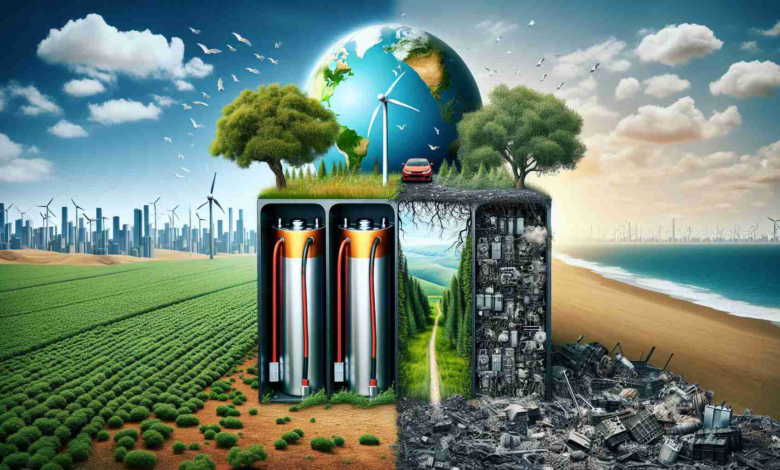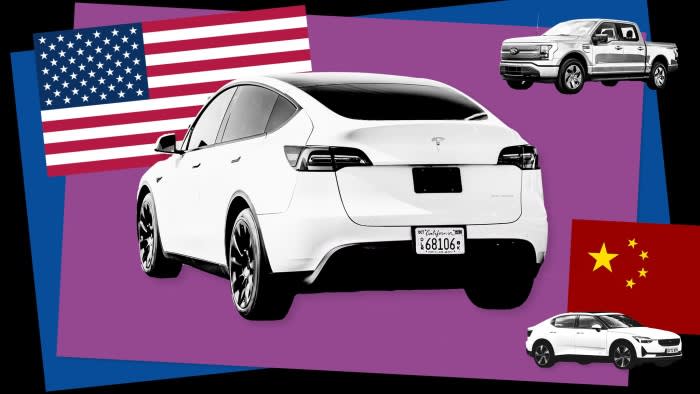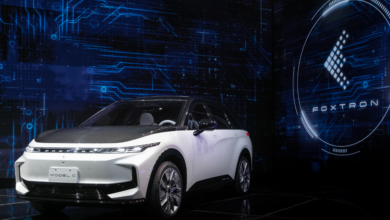Deciphering the Environmental Impact of Electric Vehicle Batteries

As Europe aims to decarbonize its vehicle fleet by setting a zero-emissions standard for newly sold cars by 2035, electric vehicles (EVs) are at the forefront of this transition. This change brings the environmental sustainability of EV batteries under scrutiny.
Summary: Research and reporting underscore that the manufacturing of EV batteries involves environmentally demanding processes, particularly in the extraction of essential minerals like lithium. Nevertheless, comprehensive lifecycle assessments indicate that EVs ultimately present a lower environmental footprint compared to traditional internal combustion engine vehicles.
Batteries are the heart of an EV, significantly impacting its range and efficiency. Conventionally, most EVs rely on lithium-ion batteries with a nickel manganese cobalt (NMC) cathode. Unfortunately, the extraction of these minerals, especially lithium, is resource-intensive. A single ton of lithium requires consuming millions of liters of water and releases considerable amounts of CO2 during mining.
Despite these environmental costs, emerging battery chemistries promise a greener future. Lithium-iron-phosphate (LFP) batteries are gaining popularity for their affordability, stability, and longer life without having as severe an impact on the environment. They omit cobalt, instead using more abundant and accessible iron, though they have a lower energy density compared to NMC batteries.
China currently dominates the EV battery supply chain, but ventures like Vulcan Energy in Europe are working on less impactful ways to source lithium, such as leveraging geothermal wells which simultaneously generate power. The potential of battery recycling and repurposing also looms large, with innovative techniques being explored to minimize the need for fresh mining.
When lifecycle emissions are analyzed, including manufacturing and potential recycling, EVs emerge as the more environmentally friendly option over their lifespan when compared to their petrol or diesel-fueled counterparts. Despite the environmental challenges in battery production, the shift to electric mobility, on the whole, offers a path to reduced vehicular emissions and a more sustainable future.
Current State of the Electric Vehicle Industry
The electric vehicle (EV) industry is experiencing rapid growth as global interests shift toward sustainable energy solutions. Europe, for instance, has put forth ambitious plans to decarbonize its vehicle fleet, setting a target of zero emissions for all new cars by 2035. Companies like Tesla, BYD, and Volkswagen are among the leaders in the EV market, advancing in technology and increasing production capacity. The increasing demand for EVs is driven not only by environmental policies but also by improvements in battery technology, reductions in cost, and growing consumer awareness.
Market Forecasts for the EV Sector
Analysts predict a bright future for the EV market. Despite the COVID-19 pandemic briefly impacting the automotive sector, EV sales have rebounded and show strong growth forecasts. BloombergNEF predicts that by 2040, 58% of new passenger vehicle sales globally will be electric. This growth is expected to be supported by government policies aimed at reducing carbon emissions, improvements in battery technology, and the expansion of charging infrastructure.
Issues and Challenges in the EV Battery Industry
While EVs are a promising solution for reducing transportation emissions, the production of EV batteries presents environmental challenges. The process of mining materials like lithium, nickel, and cobalt has raised concerns over water use, pollution, and the environmental impact of mining practices.
Lithium extraction, in particular, is water-intensive, posing a threat to local water sources in mining areas. Additionally, ethical concerns arise from cobalt mining in regions such as the Democratic Republic of Congo, where labor conditions and child labor are serious issues.
Advances in Battery Technology and Sustainability
To tackle these challenges, the industry is developing new battery chemistries like Lithium Iron Phosphate (LFP) which are less harmful to the environment. Advancements in solid-state batteries also offer hope with higher energy density, improved safety, and reduced reliance on critical minerals.
Additionally, the EU is proposing regulations to address the sustainability of batteries, requiring more responsible sourcing of materials and promoting the recyclability of EV batteries. Companies are investing in battery recycling technologies that could alleviate the demand for new mining by recovering valuable metals from used batteries.
Market Potential and Green Initiatives
Europe and countries like China and the US are investing heavily in the transition to EVs, with significant funding allocated to develop charging infrastructure and encourage consumer adoption through subsidies.
Furthermore, initiatives to source materials more sustainably, such as Vulcan Energy’s project to extract lithium using geothermal energy, seek to mitigate the environmental impact of battery production. The closed-loop system, which has a smaller carbon footprint, not only extracts lithium but also generates renewable energy.
Read more on Bloomberg about market forecasts for the EV sector, and find comprehensive insights into the global automotive market trends.
In summary, while the shift to electric mobility presents certain environmental challenges, particularly related to battery production, it remains a vital component of the global strategy to reduce transportation emissions and combat climate change. Ongoing research, investment in green technologies, and supportive policies are essential to realize the full potential of EVs as a sustainable transport solution.

Jerzy Lewandowski, a visionary in the realm of virtual reality and augmented reality technologies, has made significant contributions to the field with his pioneering research and innovative designs. His work primarily focuses on enhancing user experience and interaction within virtual environments, pushing the boundaries of immersive technology. Lewandowski’s groundbreaking projects have gained recognition for their ability to merge the digital and physical worlds, offering new possibilities in gaming, education, and professional training. His expertise and forward-thinking approach mark him as a key influencer in shaping the future of virtual and augmented reality applications.



